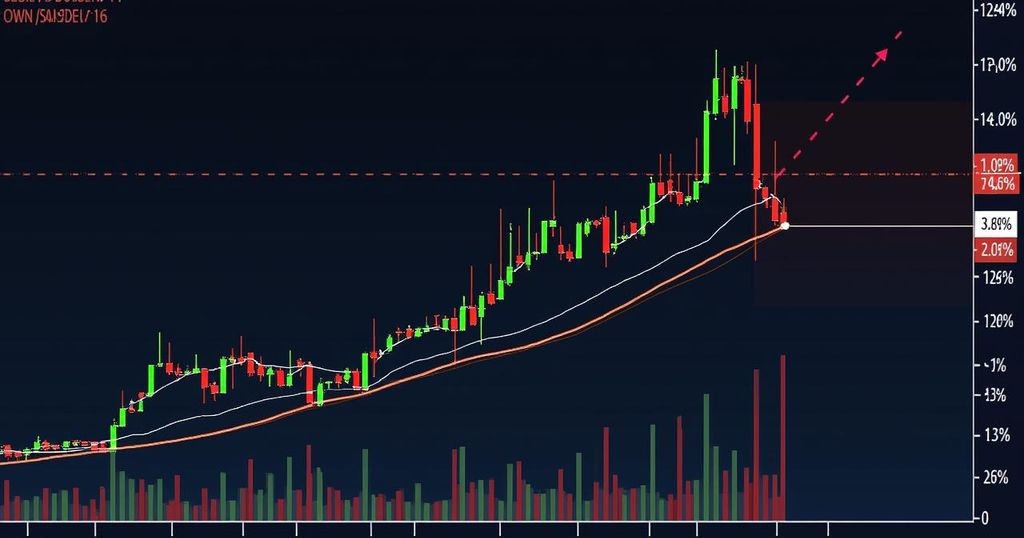NYDIG Analysis Highlights Bitcoin’s Exceptional Return Performance
A recent analysis by NYDIG identifies Bitcoin as the best-performing asset, distinguished by favorable Sharpe ratios despite its volatility. Analyst Greg Cipolaro emphasized Bitcoin’s superior returns compared to other asset classes, countering assertions from Goldman Sachs about insufficient performance relative to risk. The ongoing analysis confirms Bitcoin’s leading status in asset performance for the current year, even after a weaker third quarter.
According to recent findings published by the New York Digital Investment Group (NYDIG), Bitcoin is recognized as the leading asset in terms of return performance, notwithstanding its inherent volatility. In a detailed analysis reported on October 11, Greg Cipolaro, the Global Head of Research at NYDIG, articulated that Bitcoin, currently valued at $63,785, distinctly “stands apart from the crowd” when its performance is assessed against various other asset classes, utilizing the Sharpe ratio as a comparative metric. The Sharpe ratio serves as a financial metric that evaluates an asset’s performance in relation to its associated risk. It specifically quantifies the ratio of excess returns to the volatility of those returns, indicating that a higher ratio suggests superior risk-adjusted performance. Through his analysis, Cipolaro presented the Sharpe ratios of diverse asset classes, encompassing equities and bonds, across varying holding periods. It was found that “Bitcoin ranks favorably compared to nearly every asset class on every metric over every time frame,” as concluded from the data. While it was noted that gold marginally surpassed Bitcoin with a higher Sharpe ratio in the past twelve months, Cipolaro remarked that the difference was so negligible it could be considered “splitting hairs.” Cipolaro’s analysis also challenged assertions made by Goldman Sachs, which, on October 7, posited that Bitcoin’s performance, despite a year-to-date increase of 40%, remained inadequate to justify its volatility. He stated, “This analysis shows the contrary, that the risks (price volatility) that Bitcoin investors endure are more than made up for in terms of returns.” Additionally, he highlighted that while Sharpe ratios provide valuable insights into risk-adjusted returns, the ultimate focus for investors should be on absolute returns to fulfill their financial obligations. Moreover, he recognized that this metric does not encompass all potential risks investors might face, including issues like censorship or asset seizure. Despite encountering a challenging third quarter, NYDIG analysts affirmed that Bitcoin continues to be the best-performing asset of the year thus far. As of the latest reporting, Bitcoin’s value has stabilized after experiencing a period of minimal fluctuations, having retreated from an intraday peak of $63,150 to $62,560 at the time of publication.
The emphasis of this article revolves around the financial performance of Bitcoin in comparison to traditional asset classes. The NYDIG’s analysis, spearheaded by Greg Cipolaro, seeks to position Bitcoin as a favorable investment despite its volatility, using the Sharpe ratio as a critical measure for assessing risk-adjusted returns. This method allows investors to gauge performance while considering the risks involved. The article also addresses recent critiques from Goldman Sachs, providing a counter-narrative that reinforces Bitcoin’s potential profitability against its risks, while contextualizing the broader market trends.
In summary, the analysis by NYDIG highlights Bitcoin’s robust performance relative to various asset classes, underscoring its leading position in risk-adjusted returns despite criticism regarding its volatility. This report informs investors that, notwithstanding certain inherent risks, the returns from Bitcoin can significantly overshadow such risks, establishing it as a compelling investment opportunity. Additionally, it stresses the importance of focusing on absolute returns to meet financial goals while acknowledging the limitations of metrics like the Sharpe ratio regarding comprehensive risk assessment.
Original Source: cointelegraph.com








Post Comment